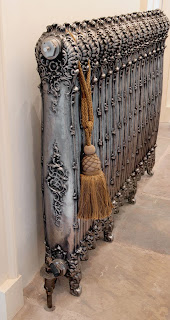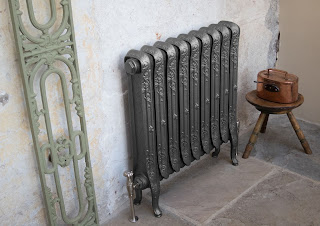High fuel costs and falling external temperatures can
quickly place a drain on household finances, especially when the central
heating system is not working efficiently.
Radiators that feel cooler at the top than the
bottom and those emitting a banging noise are tell tale signs that you've got
air trapped in your system, however it only requires a simple, DIY response to
put things right.
Bleeding radiators, including our cast
iron radiator range, involves opening a small valve on the radiator to release air.
Here, we walk you through the simple steps to resolve the
problem.
1. Start by turning off your central heating.
2. Locate the bleed valve at the top of the radiator on
either the right or left side. This might be brass and hand operated on modern
cast iron radiators or need a screwdriver/radiator key on modern
steel units.
3. Open the bleed valve until water starts to bubble out. Having
an old tea towel to cover the open valve will stop dirty water spraying on to
your walls or dripping out on to your flooring. This water may be very hot, so
be careful to avoid scalding.
4. With a tea towel ready in one hand, use the other hand to turn
the bleed valve about a half turn anticlockwise to open it. When the
water starts rushing out, quickly place the tea towel over the hole from where
the air is escaping.
5. As soon as water starts escaping, close the bleed valve as
quickly as possible.
6. Topping up the central heating system may be necessary,
as bleeding radiators can cause some loss of pressure within the
central heating system.
7. There should be a pressure gauge for the system near to your boiler. For
most domestic hot water heating systems this should read between 1.5 and 2 bar.
If the pressure reading is below this level, open the valve that lets water
into your central heating system until the gauge returns to the desired
pressure level.
8. Simply turn your heating back on for a warmer more efficient home.





